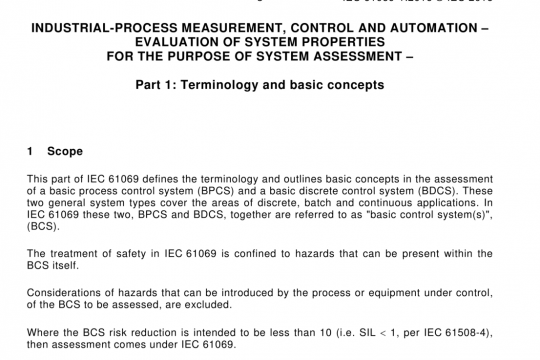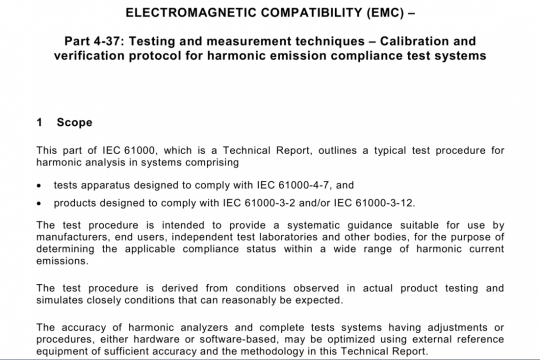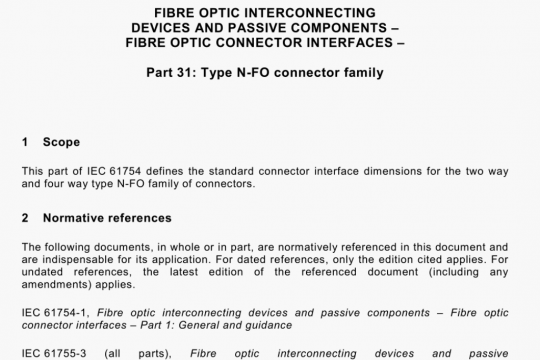IEC TR 1948-3 pdf free download
IEC TR 1948-3 pdf free download.Nuclear medicine instrumentation一Routine tests 一 Part 3: Positron emission tomographs.
3 Terms and definitions
For the purposes of this document, the terms and definitions given in IEC 61675-1,
IEC TR 61948-1 and the following apply.
ISO and IEC maintain terminological databases for use in standardization at the following
addresses:
●IEC Electropedia: available at http://www.electropedia.org/
●ISO Online browsing platform: available at http://www.iso.org/obp
4 Test methods
4.1 RELATIVE SENSITIVITY PER LINE OF RESPONSE and accuracy of NORMALIZATION
RELATIVE SENSITIVITY PER LINE OF RESPONSE and accuracy of NORMALIZATION are tested according to the guidelines and test equipment provided by the MANUFACTURER. The results of these tests are documented and checked for constancy.
4.2 CALIBRATION FACTOR and cross-calibration
For each mode of operation used, the CALIBRATION TOTAL FIELD OF VIEW with a uniform flux of a positron phantom, which is filled either with a homogeneous solid matrix containing the ACTIVITY with a known centred both transaxially and axially within the TOTAL
FACTOR is determined by irradiating the emitting RADIONUCLIDE using a cylindrical aqueous solution or with a homogenous ACTIVITY concentration. The phantom is
FIELD OF VIEW.
The total amount of ACTIVITY used is such that the COUNT LOSSES are less than 5 %, and that the RANDOM COINCIDENCE rate is less than 5 % of the total coincidence rate.
The measured data are reconstructed with all corrections applied (NORMALIZATION, COUNT LOSS, decay, attenuation, scatter, and RANDOM COINCIDENCES). From the reconstructed homogeneous volume the CALIBRATION FACTOR is determined. The CALIBRATION FACTOR is the ratio of the COUNT RATE per unit volume element in the reconstructed image and the ACTIVITY concentration in the phantom. The CALIBRATION FACTOR is documented and checked for constancy.
The accuracy of this test is critically dependent upon the accurate knowledge of the ACTIVITY concentration in the phantom. This can be assured by using a phantom filled with a long-lived positron emitter (e.g. 68Ge) with a certified ACTIVITY concentration, or by using a dose calibrator to determine the phantom’s ACTIVITY concentration.
When using quantitative PET-applications, the traceability of the ACTIVITY concentration as measured in the dose calibrator and tomograph is important (cross-calibration).
4.3 TRANSVERSE RESOLUTION
For POSITRON EMISSION TOMOGRAPHS, where reconstructed resolution might change due to detector design and alignment, TRANSVERSE RESOLUTION in the radial and tangential direction are measured for a LINE SOURCE or POINT SOURCES suspended in the air and arranged parallel to the SYSTEM AXIS at a radial displacement of r = 10 cm. These data are compared to the reference resolution data measured at ACCEPTANCE TEST according to IEC 61675-1:2013. The result is documented and checked for constancy.
4.4 Image quality
The purpose of this subclause is to measure image quality factors and quantification accuracy of the PET scanner under normal imaging conditions. To mimic such normal imaging conditions a standard cylindrical or torso phantom containing hot inserts is scanned. The reconstructed images are visually compared to the reference image for constancy. Quantitative constancy may also be assessed.
4.5 PETICT co-registration
The accuracy of registration of PET and CT images is evaluated. Tests are performed according to the guidelines and test equipment provided by the MANUFACTURER. The results of these tests are documented and checked for constancy.IEC TR 1948-3 pdf download.




